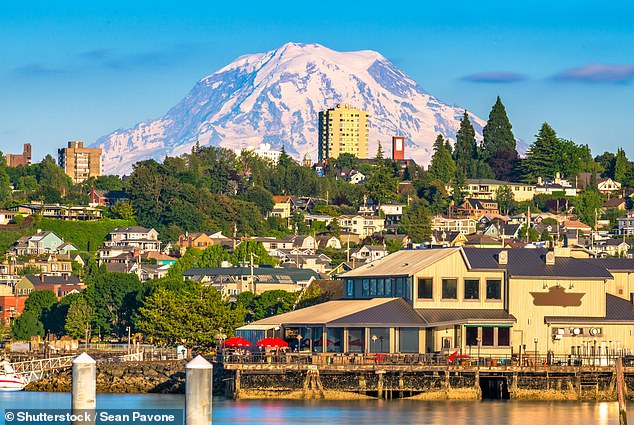Mount Rainier’s Recent Earthquake Activity Sparks Concern
Over the past 12 hours, more than 400 earthquakes shook Washington’s Mount Rainier, raising concerns about the potential for an eruption. The US Geological Survey (USGS) issued an update, emphasizing that while the volcano is not extinct, it remains active. This massive stratovolcano towers over nearly 90,000 people in cities like Seattle, Tacoma, and Yakima in Washington, as well as Portland in Oregon.
Although Mount Rainier has not experienced a significant eruption in over 1,000 years, this week’s earthquake swarm caught the attention of the USGS. Such events are often linked to volcanic unrest. A USGS geophysicist, Alex Iezzi, clarified that the current tremors are not caused by rising magma but are likely due to hot fluids moving through existing rock fractures. These fluids can generate small, frequent earthquakes as they pressurize and shift the surrounding rock.
Despite the recent activity, Mount Rainier is closely monitored, as changes in fluid-driven systems could precede more serious volcanic activity. A network of webcams, seismometers, GPS stations, and infrasound sensors continuously tracks the volcano for any signs of an impending eruption.
Volcanologists believe it is only a matter of time before Mount Rainier, considered one of the most dangerous volcanoes in the US, erupts. Jess Phoenix, a volcanologist and ambassador for the Union of Concerned Scientists, stated that Mount Rainier keeps him up at night due to the threat it poses to surrounding communities.
For now, the USGS has not found any cause for concern, with the alert level and color code for Mount Rainier remaining at GREEN / NORMAL. The earthquakes detected on Tuesday were very small, with magnitudes up to 1.6. They were too weak to be felt at the surface and are expected to continue for several days without causing damage.
The Pacific Northwest Seismic Network reported 25 earthquakes as of 11:20am PT, with the strongest measuring 2.3 in magnitude. This is the largest earthquake swarm since 2009, when over 1,000 tremors were recorded. Typically, Mount Rainier experiences about nine earthquakes per month, with swarms occurring every one to two years.
“Earthquakes are one of several parameters we monitor to indicate what a volcano is doing,” said the USGS. “Right now, this swarm is still within what we consider normal background levels of activity at Mount Rainier.”
The USGS Cascades Volcano Observatory (CVO) added that instruments do not show any detectable ground deformation at the volcano, and no anomalous signals have been observed on the infrasound monitoring stations.
If Mount Rainier does erupt, it will not be lava flows or ash clouds that pose the greatest threat to surrounding cities, but lahars—violent, fast-moving mudflows capable of destroying entire communities in minutes. These mudflows can crush, abrade, bury, or carry away anything in their path.
Tacoma and South Seattle are built on 100-foot-thick ancient mudflows from previous eruptions of Mount Rainier, indicating that these densely populated areas lie within the potential path of future lahars. Lahars are typically triggered by the rapid melting of snow and ice on the volcano’s slopes, which destabilizes loose dirt, rock, and volcanic debris.
However, lahars can also form due to gradual weakening of the volcano’s slopes from past eruptions or heavy rainfall after an eruption. The deadliest lahar in recent history occurred during the 1985 eruption of the Nevado del Ruiz stratovolcano in Colombia, resulting in approximately 25,000 deaths and $1 billion in economic losses.
The 1980 eruption of Mount Saint Helens, located just 50 miles from Mount Rainier, also produced a dangerous lahar that destroyed over 200 homes, more than 185 miles of roads, and contributed to a death toll of 57 people.
These tragic events have helped scientists better understand the risks posed by lahars and have led to increased efforts to prepare for the possibility of such a disaster at Mount Rainier.







